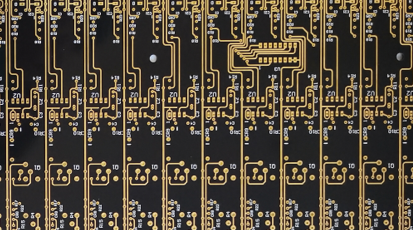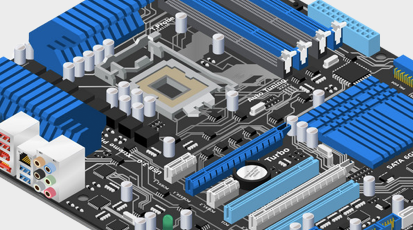What Waste Will Be Produced in PCB Manufacturing?
By:PCBBUY 01/24/2025 15:35
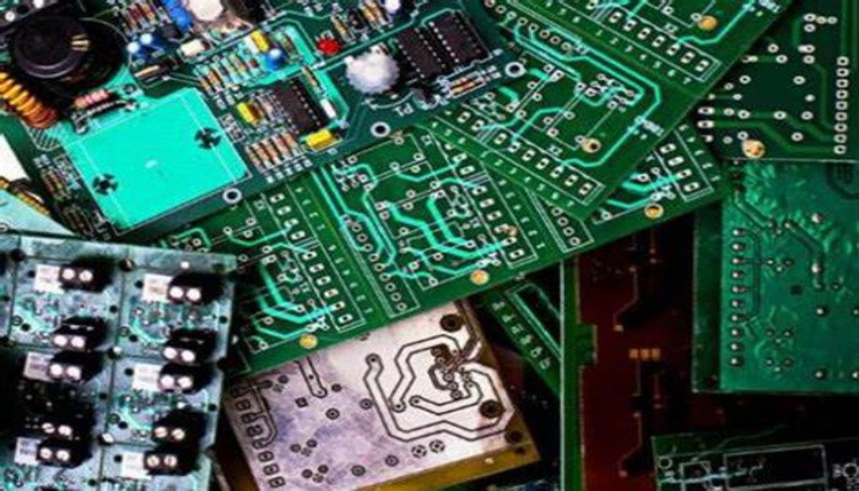
Cleaner production has different names at different stages of development or in different countries, such as "waste reduction", "waste free process", "pollution prevention" and so on. But its basic connotation is the same, is a process management in manufacturing, that is, the product and product production process, products and services to adopt pollution prevention strategies to reduce waste and pollutants. Enterprises through continuous improvement of design, the use of clean energy and raw materials, the use of more advanced technology and equipment from the source to improve resource utilization efficiency, reduce pollution, is the main means to achieve clean production.
Printed circuit board manufacturing process involves a lot of processing technology and raw materials, the implementation of clean production management system, energy saving and emission reduction, waste reduction and efficiency implementation to each link, not only can improve the production environment and protect the physical and mental health of employees, but also can bring actual economic benefits to the enterprise.
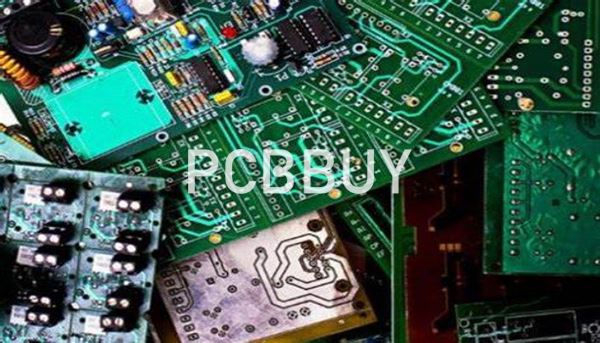
What Waste Will Be Produced in PCB Manufacturing?
In order to dispose of the "three wastes" in the production of printed circuit boards, it is necessary to understand its source. No matter the dry process or the wet process, it will produce waste such as scraps and escape harmful substances that pollute the environment. In the process of conventional production of printed circuit boards, the main processes and wastes that will become pollution sources are:
1) Photographic plate making process.
There are silver and organic matter in the waste developer and the waste fixing solution.
2) Hole metallization and metal copper plating process.
The waste liquid and rinsing water contain a large amount of copper and a small amount of tin, formaldehyde, organic complexing agents, trace amounts and chemical oxygen consumption (COD).
3) Graphic copper plating and lead tin plating or tin plating process.
The waste liquid and rinsing water contain a lot of copper and a little lead, tin, boric acid, chemical oxygen consumption, etc.
4) Inner oxidation process.
Contains copper, sodium hypochlorite, lye, chemical oxygen consumption, etc
5) Decontamination process.
Containing copper, potassium high acid, organic reducing agents, etc.
6) Gold plating process.
Contains gold, nickel and trace cyanide, some also contain trace lead, tin.
7) Etching process.
The waste liquid and rinsing water contain a lot of copper and ammonia, a small amount of lead, tin and so on.
8) Development and film removal process.
Contains a large number of organic photoresist, lye and chemical oxygen consumption
9) Copper foil film reduction and deburring process.
Contains a lot of copper powder.
10) Machining processes
Such as cutting, drilling, sanding, milling, sawing, chamfering and grooving will produce noise and dust harmful to the health of the staff. Gold coating and gold-bearing powder produced in the scraps after contour processing.
11) From the acidic or alkaline gases produced in the wet processing workshop, such as sulfuric acid, acid fog of hydrochloric acid, ammonia and organic bases, it can be seen that the pollution sources and wastes generated in the production process of printed circuit boards have three different forms of gas, liquid and solid. From the perspective of composition, a large number of them are copper and copper ions, organic polymer debris and glass particles, a small amount of lead, tin, nickel, silver, gold, giant, manganese and other metals and ions, organic matter and organic complexing agents in aqueous solutions, organic solvents and volatile organic compounds.
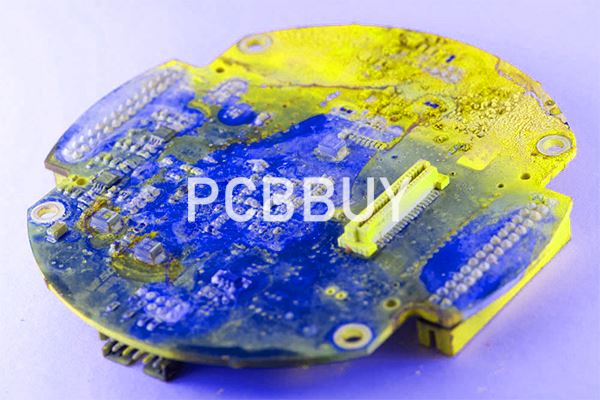
How to Operate Cleaner Production in PCB Manufacturing?
There are quite a lot of pollution sources in the printed circuit board industry, which not only produce harmful dust, but also discharge toxic and harmful Headwater, causing serious pollution to the environment. In the past, the solution to the pollution problem of the printed circuit board industry only focused on the unfinished management. For the enterprise to invest a lot of equipment costs and operating costs, causing a great burden to the enterprise. Clean production is to reduce pollution and prevent pollution in the whole process of printed circuit board production, minimize the burden of end-treatment, and achieve "wide maintenance of waste" and "waste treatment", from which economic benefits are obtained.
In view of the waste and environmental pollutants generated during the manufacture of printed circuit boards described in section 18.2.1, relatively sound production process management and waste disposal methods have been developed. According to the printed circuit board manufacturing process, the general cleaner production method is to develop a set of cleaner production methods and management measures. The first is to prevent the raw materials, products and by-products in the production process from freely escaping to the public space by closing the production equipment or the production environment, and then collect, pump (gas collection), filter and other methods to collect and summarize the pollutants respectively, and finally target the disposal of different types of pollutants. The key factors are as follows:
1. Strengthen management
1) Strengthen quality control and quality management, reduce the scrap rate, which is the most effective decontamination program, but also can obtain considerable economic benefits.
2) Strengthen the management of equipment and pre-repair, prevent equipment running, bubbing, dripping and leaking, and prevent waste and pollution of water and chemical raw materials
3) There should be water-saving measures, each process should be installed with water meters, pay attention to the maintenance of solenoid valves and water valves, and develop a good habit of saving water.
2. Recycle
Recovery of copper in etching waste liquid.
Generally, cuprous chloride is recovered from acidic etching waste, and copper oxide is harvested from alkaline waste. In this way, the pollution of copper can be removed, good environmental benefits can be obtained, and great economic benefits can be obtained.
No discharge of etching fluid, recycling and copper recovery device. This technology and device can not only recover a large amount of copper but also obtain good and stable etching effect.
Copper powder recovery of the brush machine. Through the filter cloth, the copper powder in the mixed water produced by the brush machine is filtered and recovered.
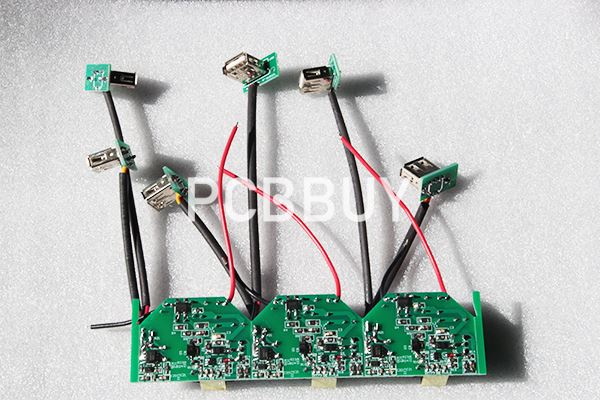
Ion exchange produces the reuse of recycled waste acid and base. The waste acid and base generated during the regeneration of ion exchange resin can be reused in wastewater treatment to eliminate the pollution of waste acid and base.
Recovery of gold in the plug gold-plated scraps.
Reuse of wastewater. After the purification system, the waste water can be reused in production, which can save water resources and reduce the discharge of waste water.
Recycling of copper clad sheet scraps
Process reform
1) Addition method replaces subtraction method, which can eliminate most copper emissions and pollution.
2) Direct electroplating instead of electroless plating can eliminate the pollution of organic complexes and formaldehyde.
3) The use of nitric acid instead of fluoroborate to remove Sn can eliminate fluorine pollution.
4) The use of CAD and light rendering plate can improve the quality of the substrate and reduce the waste and pollution of the photographic substrate.
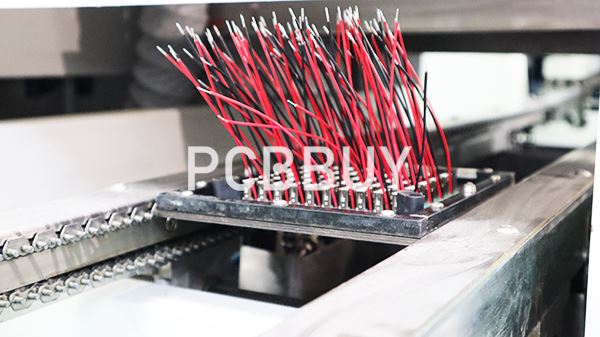
Exhaust gas treatment in PCB manufacturing
There are many types of exhaust gases generated in the manufacture of printed circuit boards, which need to be collected in different categories and targeted treatment. As shown in Figure 18-1, the general process of waste gas treatment is to collect the waste gas at the source, such as installing the top cover and exhaust system on the liquid tank of the wet process, placing the gantry electroplating line in a separate room and maintaining exhaust air. After the collected gas is filtered and dusted, the solid powder contained in it is separated, especially the drilling, milling, sanding and other mechanical processing processes and plasma treatment processes, the powder particles should be collected separately. The gas after dust removal is generally sprayed and washed with the corresponding solution in the absorption tower, or treated with activated carbon absorption and combustion, and then directly discharged after reaching the standard. For different waste gases, different cleaning gas absorption and treatment methods are required.
1. Acid waste gas treatment
Acid waste gas is mainly produced by inner pre-treatment, horizontal plating through hole sinking copper wire, acid copper plating wire, gold sinking, dry film development corrosion tin, organic weldable protective film production line, finished product cleaning and other processes or auxiliary facilities. Its main components are box w, acid, nitrogen oxide, sulfuric acid mist, which can be absorbed in the absorption tower with NaOH or acid and other soluble solution. Chemical reactions such as:
HCl + NaOH->NaCl + H2O
2. Alkaline waste gas treatment
Alkaline waste gas treatment is mainly the ammonia gas escaped in the alkaline etching process, the small molecular weight organic base in the whole hole solution can be absorbed in the absorption tower with dilute H2SO4(1:4), chemical reactions such as:
2NH3+ H2SO4->(NH4)2SO4
3. Other waste gas treatment
Other waste gas is mainly produced by welding resistance electrostatic spraying, welding resistance pre-baking, text post-baking, inner coating, printing line, reflux furnace tin-spraying and other processes, and its main components are small molecular weight organic matter or organic solvent, resin decomposition products, ink, rosin oil and so on. In view of the physical and chemical characteristics of such waste gas, the physical method of activated carbon absorption or ultraviolet photolysis, regenerative catalytic combustion, low temperature plasma treatment and other chemical oxidation methods are generally used to deal with it, which can meet the general emission standards.
Waste liquid treatment in PCB manufacturing
Waste liquid treatment is the use of various technologies and segments, the waste liquid in the separation, recycling or conversion into non-vegetarian substances, printed circuit board manufacturing waste liquid is mainly acidic or alkaline heavy metals, surfactants, high organic compounds, nitrogen compounds, dangerous compounds and other exceeded the standard and can not be discharged directly. Only a few such as green oil removal]# organic solvent waste liquid. Wastewater treatment is a process of purification after physical, chemical and biological treatment of water, and the water quality after treatment can meet the requirements of discharging into a certain water body or re-use.
The wastewater treatment in the production of printed circuit boards is mainly for the treatment technology of heavy metal wastewater containing copper, surfactants and organic nitride digestion technology, and the treatment technology of harmful substances such as F-. The main water quality indicators of the treated effluent are called value, suspended solids, heavy metals, chemical oxygen demand (COD), total organic carbon content (TOC), ammonia nitrogen (NH-N) and total nitrogen (TN). The treated water discharge shall meet the national or local standards, such as GB 3838-2002 surface water environmental quality Standard, GB 21900-2008 Electroplating pollutant Discharge Standard, DB 44/26-2001 Water pollutant discharge Limit, etc.

The production process of single-sided printed circuit board is short, the process is simple, and the types of wastewater generated are also less, mainly the wastewater generated by acid copper chloride (or ferric chloride) etching and the wastewater containing organic components such as dry film and screen printing material. The wastewater generated in the manufacture of double-sided and multi-layer printed circuit boards is more complex, in addition to acidic etching wastewater and wastewater containing dry film and screen printing material, there are also pore metallization, electroplating copper, electroplating tin, alkaline etching, blackening, drilling and other wastewater. With so many types of wastewater, it is impossible to treat them separately. Therefore, according to the nature and treatment methods of wastewater, it can be summarized as general acidic or municipal wastewater, wastewater containing complex, wastewater containing high concentration of organic matter, wastewater containing hazardous compounds, etc.
Treatment of wastewater containing heavy metals
The main methods for treating heavy metals are chemical precipitation, ion exchange, electrolysis, evaporation recovery, electro dialysis and reverse osmosis. The latter four methods have high cost and large energy consumption, and it is difficult to form the processing capacity of the system. Chemical precipitation is the standard method for treating copper and most heavy metal wastewater, and the treatment effect will be better if supplemented by ion exchange method
(1) Ordinary wastewater containing heavy metal ions
Generally, it is directly treated by chemical precipitation. Chemical precipitation method is to add some chemical precipitating agents to the wastewater, so that it and the pollutants to be removed in the wastewater heavy metal ions) to form a direct chemical reaction to separate and remove the method. The process mainly includes the following three parts:
1) Add a chemical precipitator, a chemical reaction occurs, the formation of insoluble chemical substances, so that pollutants (heavy metal ions) precipitate out. The main chemical precipitants are NaOH, Ca(OH)2, Ca0, Na2CO3 Or NaS, etc. Generally, NaOH, Ca(OH)2 or Na2S are used as precipitants. NaOH is used as a precipitator to produce less sludge, which is easy to recover copper, but small particles, difficult to filter and high cost. With Ca(OH), as a precipitating agent, the resulting sludge particles are large, and it is itself a filter aid, which is easy to filter, low cost, but the amount of sludge generated is large. If Na and S are used as precipitating agents, the solubility product of the sulfide precipitation of heavy metal ions is much lower than the solubility product of the hydroxide of metal ions, so the precipitation effect of the sulfide is heavy and good, but the sulfide has a bad smell, excessive sodium sulfide will cause water pollution, and iron ions are required to remove the excess sulfur ions, so the cost is higher.
2) The precipitation is separated from the solution by coagulation, sedimentation, flotation, filtration, centrifugation, adsorption and other methods. Coagulants are mainly polypropylene coolamine, polymerized basic aluminum chloride, ferrous sulfate and so on.
3) The sludge is recycled or landfill after concentration, press filtration, dehydration and other treatment
(2) Wastewater containing heavy metal ion complexes
The complex wastewater mainly refers to the pore metal chemical process of printed circuit boards, which is mainly the wastewater containing Cu2+ and various complexing agents with pH value of 8~9, accounting for 3% ~5% of the total wastewater, the concentration of Cu2* ions reaches 300mg/L or more, and the complexing agents are mainly ethylenediamine tetraacetic acid (EDTA) and NH. Tartrate citrate, etc. These copper complex ions are relatively stable under alkaline conditions, which seriously affects the precipitation of copper ions, and the copper content in the effluent cannot meet the requirements of Cu*<0.5mg/L. Whether the copper complex can be effectively removed is the key to the success of wastewater treatment process. At present, in addition to chemical precipitation method, there are oxidation method reduction method, biochemical method and so on.
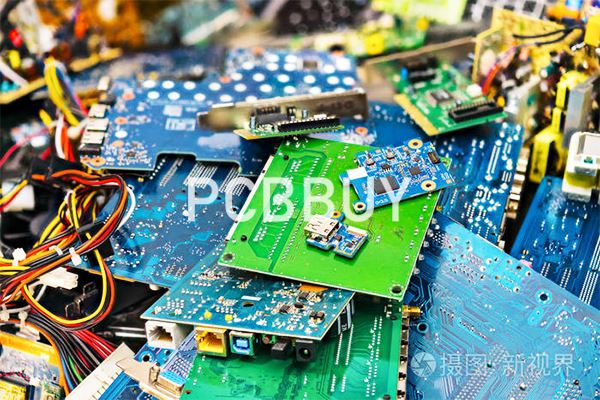
1) Alkali precipitation method.
It is impossible to precipitate copper by adding alkali directly to the copper solution of EDTA, so we must first add hydrochloric acid to the wastewater to adjust the pH value between 2 and 3 to free Cu+, and then add NaOH or Ca(0H) after removing EDTA to the pH value of 8 to 9, so that Cu2+ precipitates out. If the precipitation is not ideal, Na,S can be added to further precipitate. This method has many steps and consumes a lot of acid and base, resulting in high treatment cost.
2) Heavy metal trapping agent method.
The heavy metal catcher is a water-soluble compound capable of forming stable and insoluble integrators with Cu+, and can directly precipitate Cu2* from aqueous solutions without being affected by coexisting complexes. This method is easy to operate, but the price of the general heavy metal catcher is high, resulting in a high treatment cost.
3) Ferrous sulfate precipitation method.
Under acidic conditions, the stability constant of EDTA-Fe3+ is higher than that of EDTA-Cu2+, so Cu2+ can be replaced by Fe3+, and then the pH value of the wastewater can be adjusted to precipitate Cu2+ completely. In the actual project, ferrous sulfate is added and air is pumped to oxidize part Fe2+ to produce Fe+, and then the pH value is adjusted to about 9 to produce Fe(OH) and Fe(OH). Cu(0H), precipitation, the use of Fe(OH), strong adsorption, the advantages of fast precipitation rate, can accelerate the removal of copper, the method has a certain application in engineering, but the disadvantage is that the dosage is large, the amount of sludge generated is relatively large.
4) Oxidation method.
The oxidation method is a method of oxidizing and degrading EDTA and other organic ligands through strong oxidants such as NaCI0 and Fenton reagent, releasing free Cu2+ and then using alkali precipitation. The oxidation method can not only break the complexions and precipitate Cu2+, but also reduce COD and NH-N in wastewater. This method is simple and feasible, but it is rarely used because of the high cost of adding large amounts of oxidants.
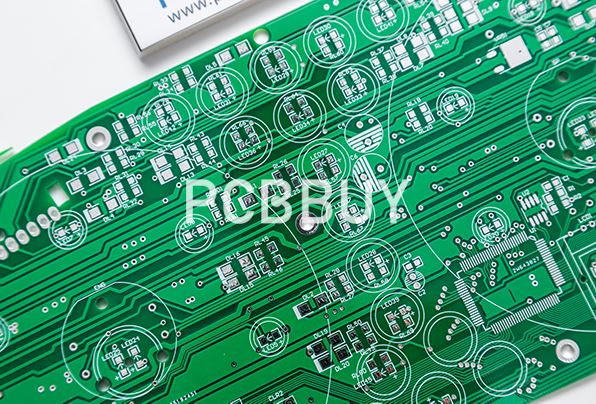
5) Reduction method.
Reduction method is to add reducing metal powder to wastewater, such as Fe, A1, etc., to replace copper at the same time to produce flocculation precipitation effect, with the advantages of water and electricity saving, A1 powder reduction precipitation method is a method widely used abroad.
6) Biochemical method.
Under anaerobic conditions, the complex is degraded and destroyed by adsorption, absorption and transformation of microorganisms, so that Cu2* is released and combined with S- generated under anaerobic conditions to precipitate CuS. This method can not only effectively reduce the concentration of Cu+ in the discharge water, but also reduce COD and NH-N at the same time, and has been applied in some domestic PCB manufacturers.
Solid waste disposal in printed circuit board manufacturing
Sludge treatment
Single-sided printed circuit board sludge is relatively simple, are Cu(OH)2, can be recycled into CuS04. The sludge of multi-layer printed circuit boards is more complex, mostly mixed sludge, which is difficult to recover. At present, the comprehensive utilization technology of copper-containing sludge in printed circuit board manufacturing enterprises can be mainly divided into four categories: recovery technology of metal copper in sludge, thermal chemical treatment technology of sludge, sludge solidification landfill treatment and sludge materialization technology.
The recovery of copper in copper-containing sludge usually adopts the method of acid leaching, ammonia leaching or biological leaching to leach copper, and then adopts the chemical precipitation method, ion exchange method, electrolysis method, solvent extraction method and microbial purification method to recover copper or copper salt. At present, the recycling and harmless treatment technology of copper-containing sludge is also constantly explored and updated, and the technical process with high recovery efficiency and less pollution will be further developed.
Reference
He Wei, PCB Basic Electrical Information Science and Technology, China Machine Press,408-414
Industry Category


